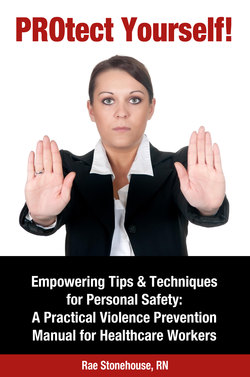Читать книгу PROtect Yourself! Empowering Tips & Techniques for Personal Safety: A Practical Violence Prevention Manual for Healthcare Workers - Rae Stonehouse - Страница 30
На сайте Литреса книга снята с продажи.
C.Non-verbal messages
Оглавление•Be aware of non-verbal communication. A person cannot “not communicate.”
•Avoid exaggerated gestures which may startle or threaten.
•Reduce nervous mannerisms and avoid over-activity. You will appear in control even though you may not feel that way.
•Portray a confident non-anxious manner.
•Keep your hands in view and not behind the back or in the pockets. The person may believe you are hiding something.
•Approach with the palms open. This is the handshake or welcoming position.
•Honour “personal space”. Remember the variables involved include the sex, size, familiarity and the speed of the approaching helper.
•Remember this distance may double or triple when a person is in a crisis state.
•Use the “tactical interview stance”. Standing at least one leg length distance from the client (about 3 feet), and turned approximately 45 degrees to the side with the hands in plain sight is less threatening and offers individuals a “perceived” route of escape. Keep hands open and above waist line. Standing squarely face to face is issuing a challenge and is also unsafe.
•Avoid standing over people who are upset. Use eye level. Use increased distance to approach eye level.
•Isolate the situation.
